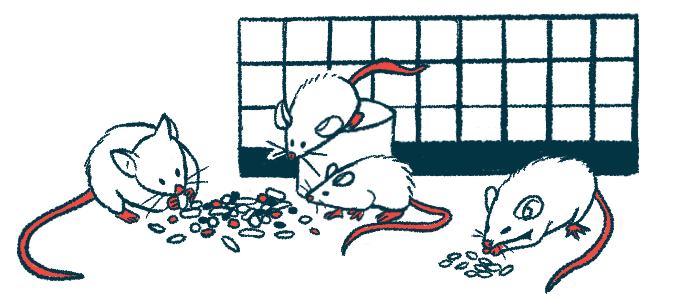Semi-synthetic Compound Promotes Myelin Repair in MS Mice
Lanthionine Ketimine Ethyl Ester Accelerates Remyelination, Study Finds
Written by |

A man-made molecule derived from a naturally occurring amino acid was able to promote the repair of the myelin sheath — a fatty coating around nerve fibers that is damaged in multiple sclerosis — in a mouse model of the disease, a new study reports.
“These findings suggest that … LKE can potentially be formulated to induce remyelination [myelin repair] in neurological diseases associated with demyelination including MS,” the researchers wrote.
The study, “Lanthionine Ketimine Ethyl Ester Accelerates Remyelination in a Mouse Model of Multiple Sclerosis,” was published in ASN Neuro.
MS is caused by inflammation that damages the myelin sheath, a substance that is needed to protect nerve fibers from damage and accelerate nerve signal transmission.
While the lost myelin can be repaired by oligodendrocytes, the cells chiefly responsible for making new myelin in the brain and spinal cord, this process is not very efficient in MS. There is a highly unmet need for effective therapies that boost remyelination in MS.
LKE is a semi-synthetic derivative of the amino acid lanthionine. Most amino acids are used to build proteins, though lanthionine serves other signaling and metabolic roles instead.
The exact biological mechanisms of LKE are not fully understood, but prior research has indicated that it reduced inflammation and myelin damage in a mouse model of MS called experimental autoimmune encephalitis (EAE).
Now, a group of U.S.-based scientists examined the effects of LKE in another mouse model of the disease where myelin damage is caused by treating the mice with a toxic chemical called cuprizone.
While about 90% of axons (nerve fibers) were myelinated in healthy mice, after five weeks of eating food laced with cuprizone just 5% of axons had myelin.
After this initial treatment, cuprizone was stopped, and mice were given either regular food or food with LKE. Two weeks later, 50% of the axons in mice given normal chow were myelinated, compared with 65% in mice given LKE.
“LKE therefore led to a 30% increase in the total percentage of myelinated axons as compared to remyelination on control chow,” the researchers wrote.
The team noted that “a large number of naked axons remained” despite LKE treatment, but said that “results from several other laboratories suggest that remyelination up to 70% of control values may be the maximum achievable.”
Myelin thicker in LKE Mice
Further examination of the mice’s brains showed that myelin was thicker in mice given LKE than in control mice, with similar improvements seen across both larger and smaller axons. Myelin in these animals was still slightly thinner than in healthy animals without cuprizone treatment, although the differences were not significant.
LKE treatment also led to increases in levels of myelin basic protein (MBP) and other molecules associated with myelin repair.
Administration of cuprizone led to a marked reduction in numbers of oligodendrocytes. While numbers recovered somewhat for mice given normal chow, mice given LKE showed “a nearly complete recovery” of oligodendrocytes, including mature myelin-making cells. LKE treatment had little effect on other glial cells (astrocytes and microglia).
Notably, analyses did not suggest differences in how much oligodendrocytes or their immature precursor cells were dividing and growing, which indicates that the increase in oligodendrocyte numbers is attributable to LKE either boosting the survival and/or maturation processes of these cells.
“The current study demonstrates that LKE, a semi-synthetic derivative of the naturally occurring, non-proteogenic amino acid lanthionine, accelerates the remyelination process in the [cuprizone] mouse model of MS,” the researchers concluded, noting that more research is needed to elucidate the precise mechanisms of action of LKE.






